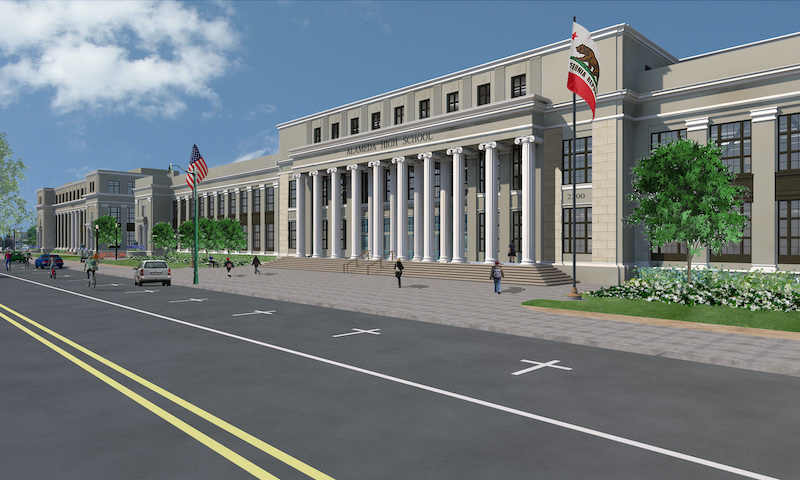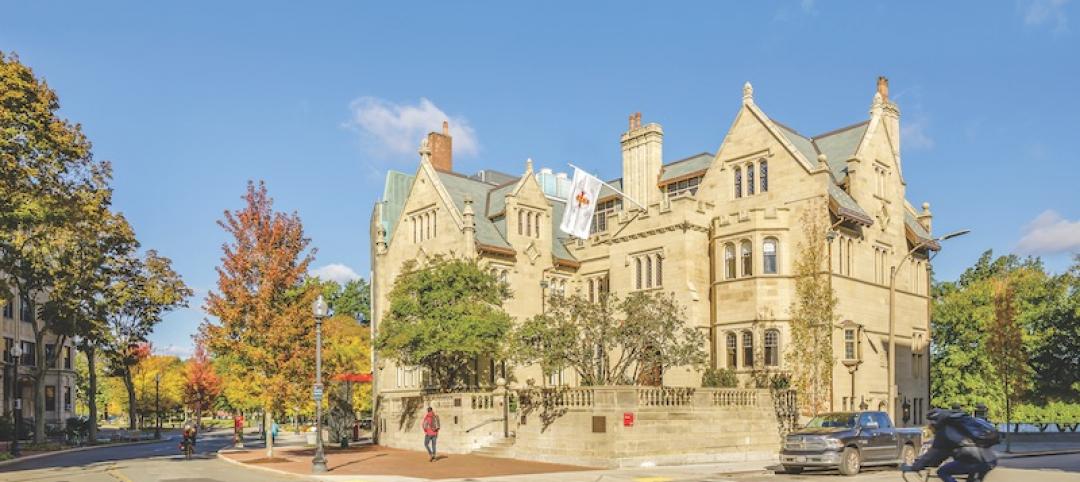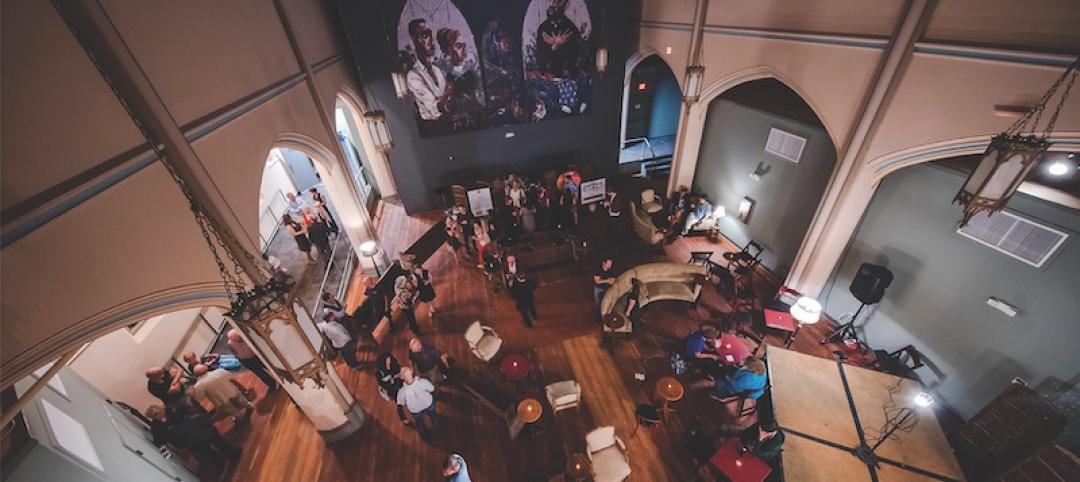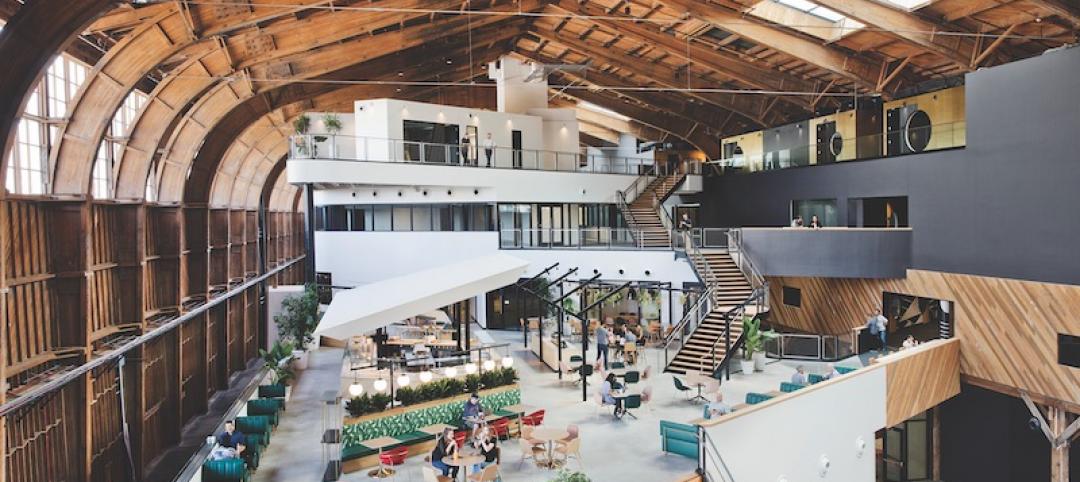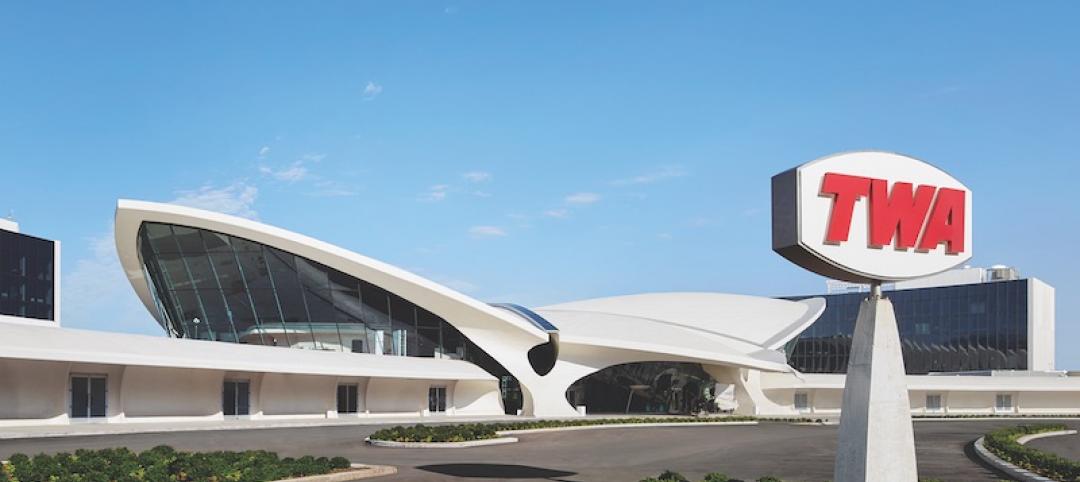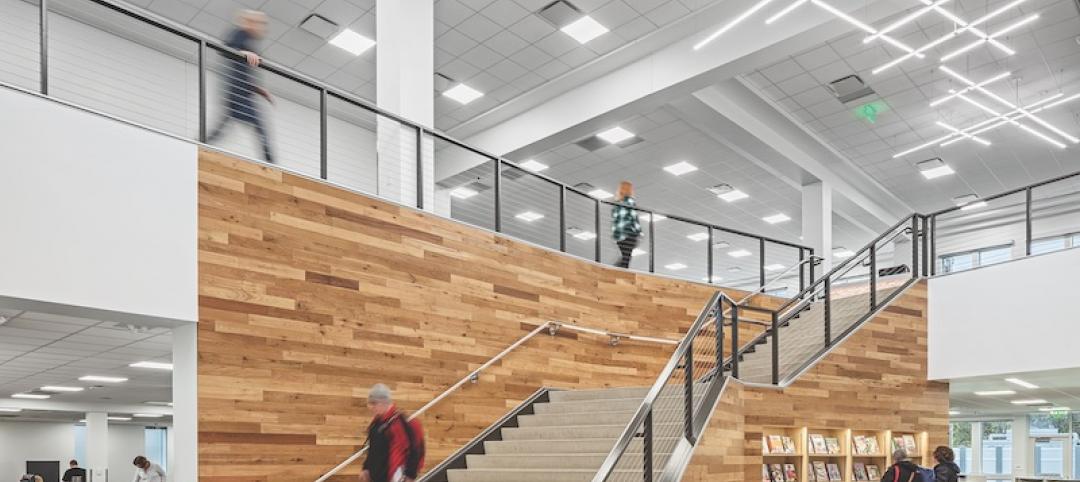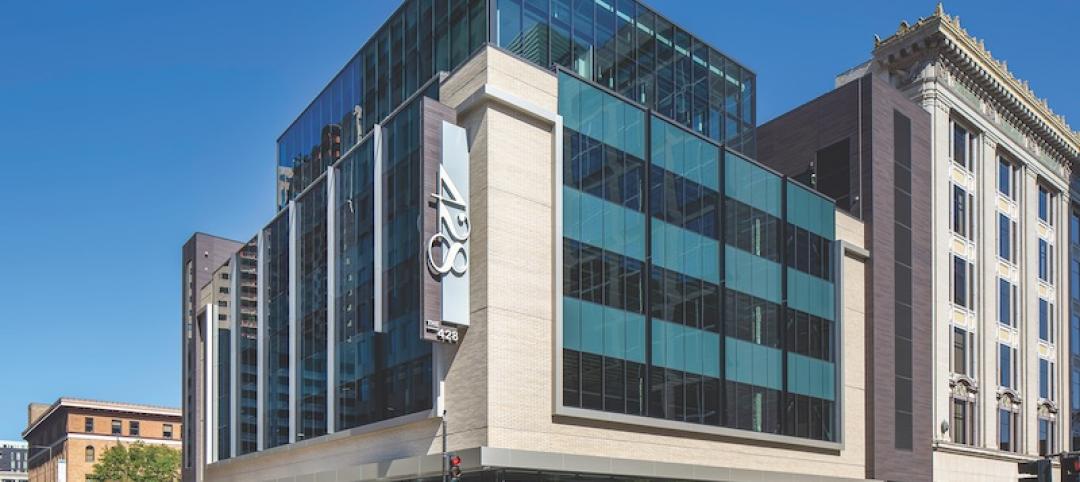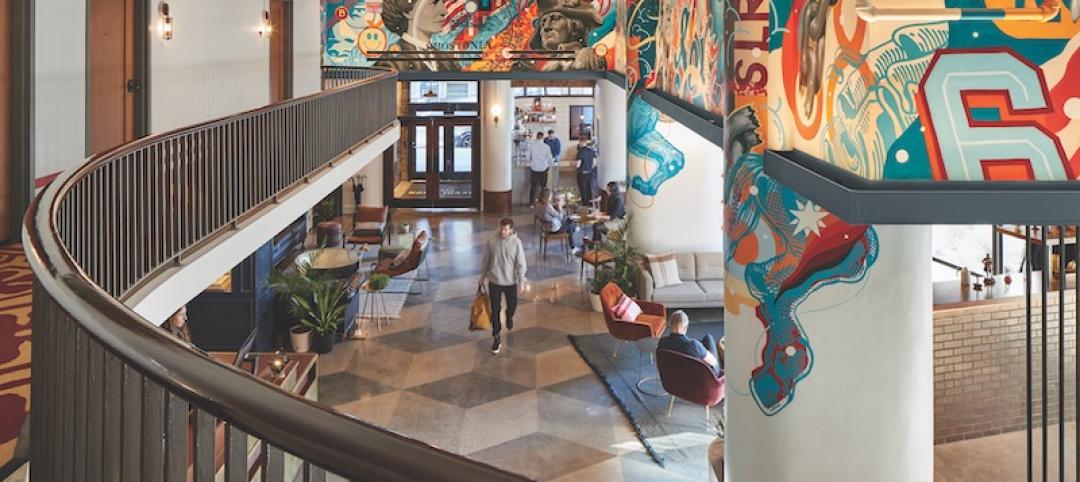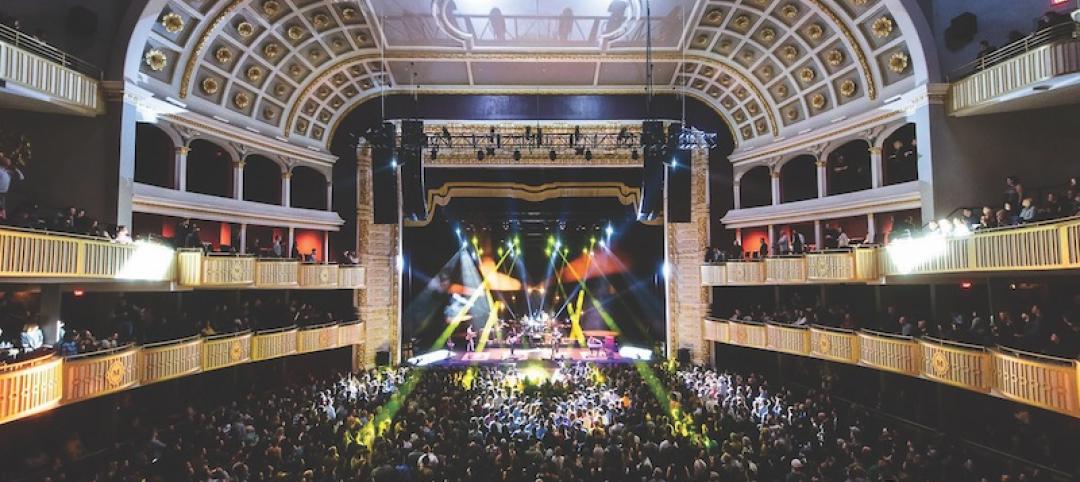The Historic Alameda (Calif.) High School (HAHS) had been an eyesore in its community for quite a while.
Originally designed in a neoclassical style by architect Carl Werner and opened in 1924, the school, consisting of a two- and three-story building, hadn’t been used for education since 1978 because of structural seismic concerns. Over the following three decades, the Alameda Unified School District used the buildings for office space. But the library moved out in 2006, and another seismic inspection led to shuttering the buildings permanently in January 2013. They were vacant and fenced in for the next five years.
HAHS got a second life thanks to a $179.5 million bond issue that voters approved in 2014, which prioritized the renovations of Alameda and Encinal high schools. One goal was to spend part of that money to restore and preserve HAHS’s 1920s-era architecture while creating a 21st Century flexible and modernized learning environment.
This project, one of California’s largest historic school renovations, was three jobs rolled into one: a seismic retrofit, a historic preservation, and a modernization. The completed work was the recipient of a 2020 Silver Reconstruction Award from BD&C.
This project included removing 2.4 million lbs of concrete and 900,000 lbs of wood, and installing 1.2 million lbs of steel, 19 miles of conduit and wiring, and five miles of copper and steel piping, according to the District.
The Reconstruction Team conducted comprehensive research that solicited input from the District’s leadership, the school’s staff and families, and the community at large. That input was granular, touching on everything from where the school’s administration offices would be located, to what kinds of furniture and landscaping were best suited to meet the project’s intent.
The ReCon Team also had to develop innovative testing and restorative methods so that the building would be safe enough to receive 1,786 students again on August 8, 2019.
SEISMIC SAFETY INCLUDED STABILIZING SOIL
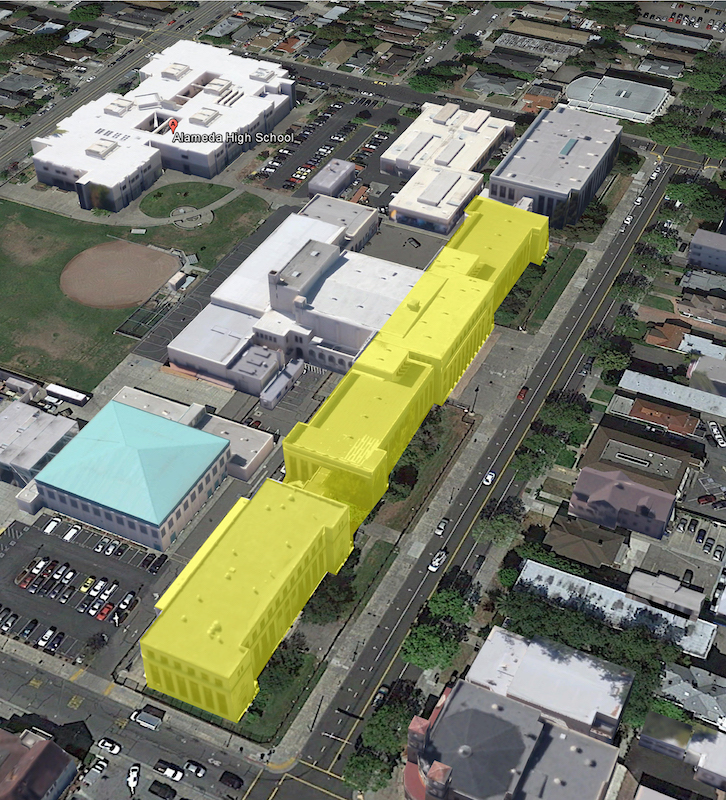
This aerial rendering shows the scope of this project that included stabilizing soil and installing new bracing to keep the buildings apart if an earthquake hit.
HAHS was seismically vulnerable primarily because of poor lateral resistance resulting from it sitting on liquefiable soil. To stabilize the soil, geotechnical engineer Miller Pacific Engineering Group removed the buildings’ raised floors and framing temporarily so that a small mobile rig could drill 6,000 holes under and around the buildings, into which 1,200 cubic yards of cement grout were injected.
The Recon Team installed new steel braces and fitting expansion joists between the campus’s two buildings so they could move, but not crash into each other, in the event of an earthquake.
The Team also found that the three-story building’s concrete columns were extremely weak; in some cases under 700 psi when 3,000 psi were needed. The Team reinforced those columns by attaching them to new steel columns on steel footings.
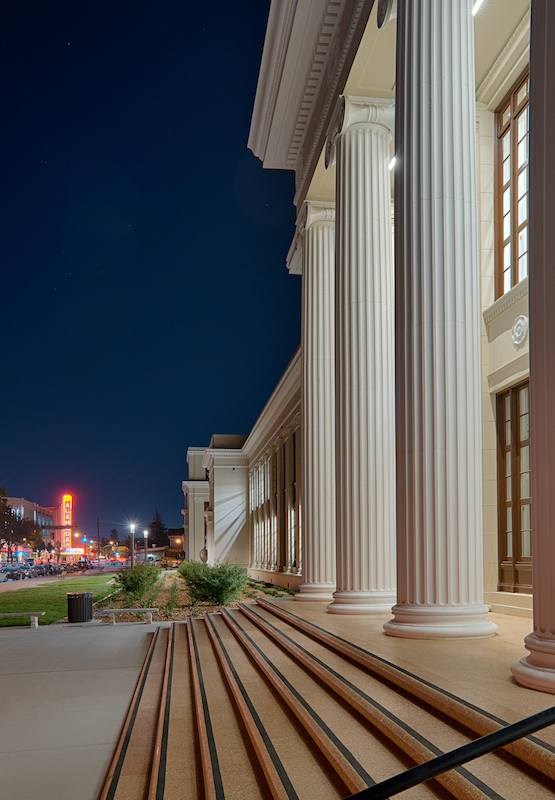
Concrete columns weakened by aging and wear were reinforced by attaching them to steel columns mounted on steel footings.
WINDOW RESTORATION A BIG PART OF SCHOOL’S HISTORIC PRESERVATION
The Recon Team worked with the Alameda Architectural Preservation Society to restore the school’s historic features. That included renovating and restoring 350 historic wood windows and 6,000 glass panes while preserving the original sills, sashes, cabinetry, and trim. (The project’s GC, Lathrop Construction, created its own millwork department to accommodate the building’s specific needs.)
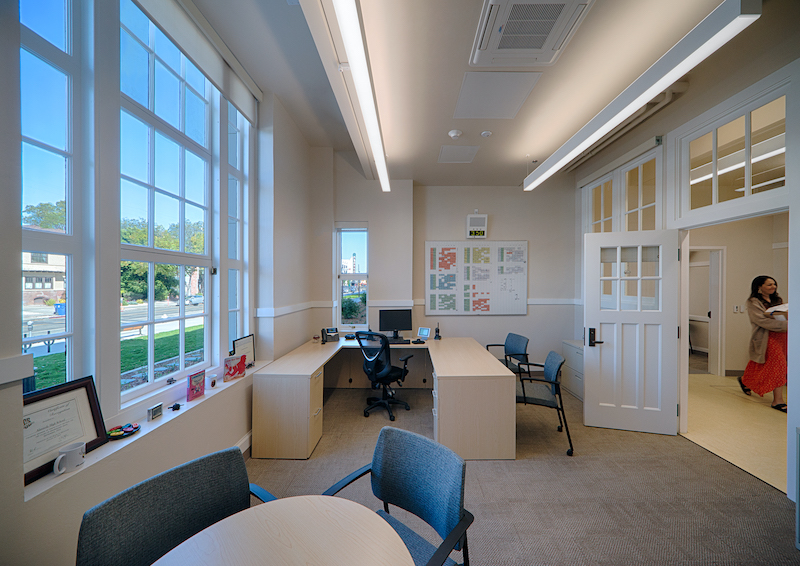
One of the school's remodeled administration offices is bathed in natural light. A big part of the school's restoration was the renovating and restoring its windows while preserving their original millwork.
The Team repaired and/or refinished the building’s front lobby, columns, terrazzo stairs, and the bronze and copper detailing outside the buildings. The buildings’ exteriors were painted to match their original color. The school’s time capsule, dating back to 1927, was dug up, cleaned, and replaced. Commemorative plaques for each year were restored. (The Recon Team’s design-architect, Quattrocchi Kwon Architects, reportedly hired a font specialist for the plaque restoration.)
MODERNIZATION ADDS SCIENCE LABS AND TECH TOOLS
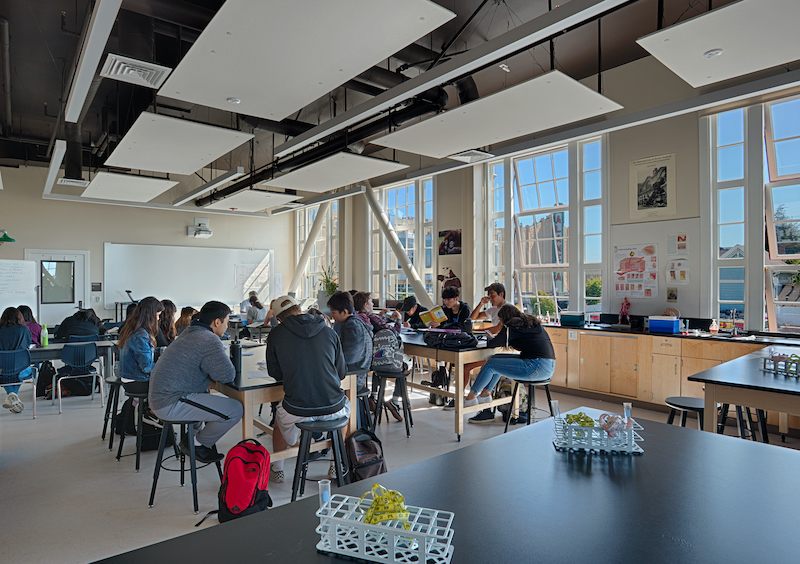
A major element of the school's reconstruction was the modernization of 37 classrooms and the addition of 11 science labs (above).
To modernize HAHS, its interior walls and floors were removed, and its classrooms were rebuilt to meet current size requirements, with higher ceilings and attics. All told, this project modernized 37 classrooms and created 11 science labs, as well as added student services spaces, a faculty lounge, and meeting rooms.
The classrooms and labs include new technology, acoustic panels, and furniture. Access to entrances and exits are updated. Third-floor skylights are restored, and new electrical, mechanical, and fire sprinkler systems are installed.
The renovation of the school’s Kofman Auditorium was completed in 2020.
PROJECT INFORMATION: Size 100,000 sf Construction start and finish June 2017 – August 2019 Cost $57 million Delivery method Lease-leaseback
BUILDING TEAM: Submitting firm and Architect Quattrocchi Kwok Architects Owner/developer Alameda Unified School District SE ZFA Structural Engineers ME/PE Costa Engineers EE O’Mahony & Myer Electrical Engineering & Lighting Design GC/CM Lathrop Construction Associates
Related Stories
Reconstruction Awards | Dec 13, 2019
A manse makeover: The Dahod Family Alumni Center at the Castle
A 1915 castle on BU’s campus is carefully restored for alumni events.
Reconstruction Awards | Dec 13, 2019
Community effort: Rose Collaborative
This post-Katrina project has become a citadel of the arts and education in the Crescent City.
Reconstruction Awards | Dec 12, 2019
New flight pattern: Google, Spruce Goose
The hangar that once housed the Spruce Goose is adapted to meet a tech giant’s workplace needs.
Reconstruction Awards | Dec 10, 2019
Enter the world of deep time: David H. Koch Hall of Fossils
The new enclosed FossiLab gives visitors a glimpse into the exacting work of Smithsonian scientists and preservationists.
Reconstruction Awards | Dec 6, 2019
TWA Hotel at JFK International Airport: Home away from home
A dormant, 1960s-era flight center is converted into a snazzy hotel and conference facility.
Reconstruction Awards | Dec 6, 2019
Columbus Metro Library Hilliard Branch
Senior living clubhouse becomes a modern library in central Ohio.
Reconstruction Awards | Dec 5, 2019
The 428: St. Paul's office corner
A long-forgotten five-and-dime store becomes a speculative office property in Minnesota’s capital.
Reconstruction Awards | Dec 4, 2019
The squeeze is on: The Revolution Hotel
Once a 1950s-era YWCA, The Revolution is now a hip new hotel in The Hub.
Reconstruction Awards | Dec 2, 2019
Hudson Commons: Over the top
A project team converts a 1960s industrial structure into a Class A office gem.
Reconstruction Awards | Nov 26, 2019
Sweetest sounds: Metropolitan Opera House
An early 20th-century opera house now hosts concerts from Disney Acapella to Weezer.


